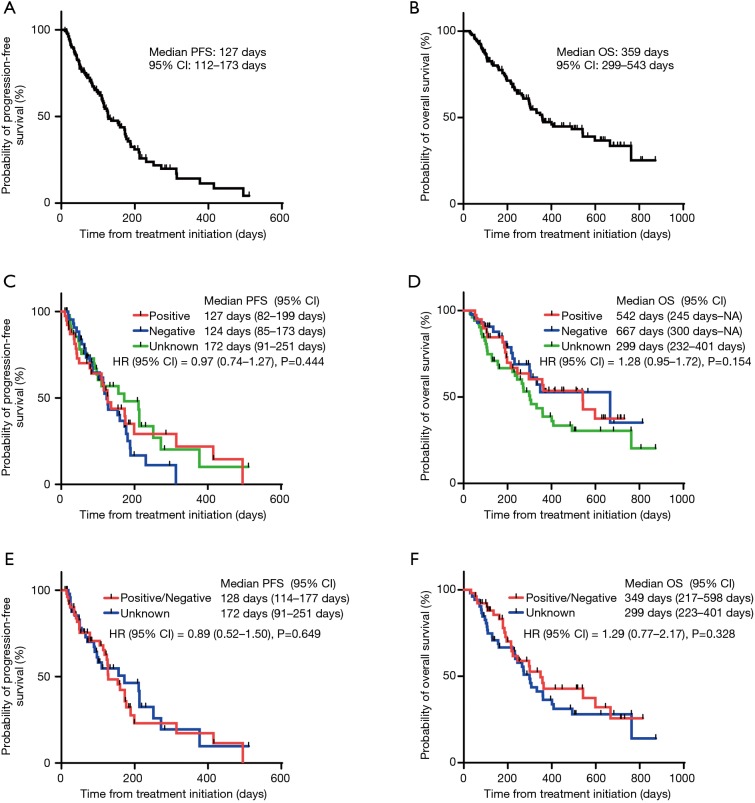Figure 1.
Kaplan-Meier curve for PFS and OS. Median PFS (A) and OS (B) of all NSCLC patients treated with Doc plus Ram started at 127 and 359 days, respectively; (C) there was no significant correlation in median PFS of the treatment among NSCLC patients with positive, negative, and unknown PD-L1 status (127, 124 and 172 days, respectively, P=0.444); (D) there was no significant correlation in the median OS of NSCLC patients with positive, negative, and unknown PD-L1 status (542, 667, and 299 days, respectively, P=0.154); (E,F) no significant difference in the median PFS and OS was observed between patients with detected PD-L1 (positive or negative) and unknown PD-L1 status adjusted for age, sex, PS, disease stage, cell type, smoking status, and treatment line of the initiation of the combination therapy of Doc and Ram using the propensity score analysis (PFS; 128 and 172 days, respectively, P=0.649; OS; 349 and 299 days, respectively, P=0.328). PFS, progression-free survival; OS, overall survival; NSCLC, non-small cell lung cancer; Doc, docetaxel; Ram, ramucirumab; HR, hazard ratio; CI, confidence interval; PD-L1, programmed death-ligand 1; PS, Eastern Cooperative Oncology Group Performance Status.

